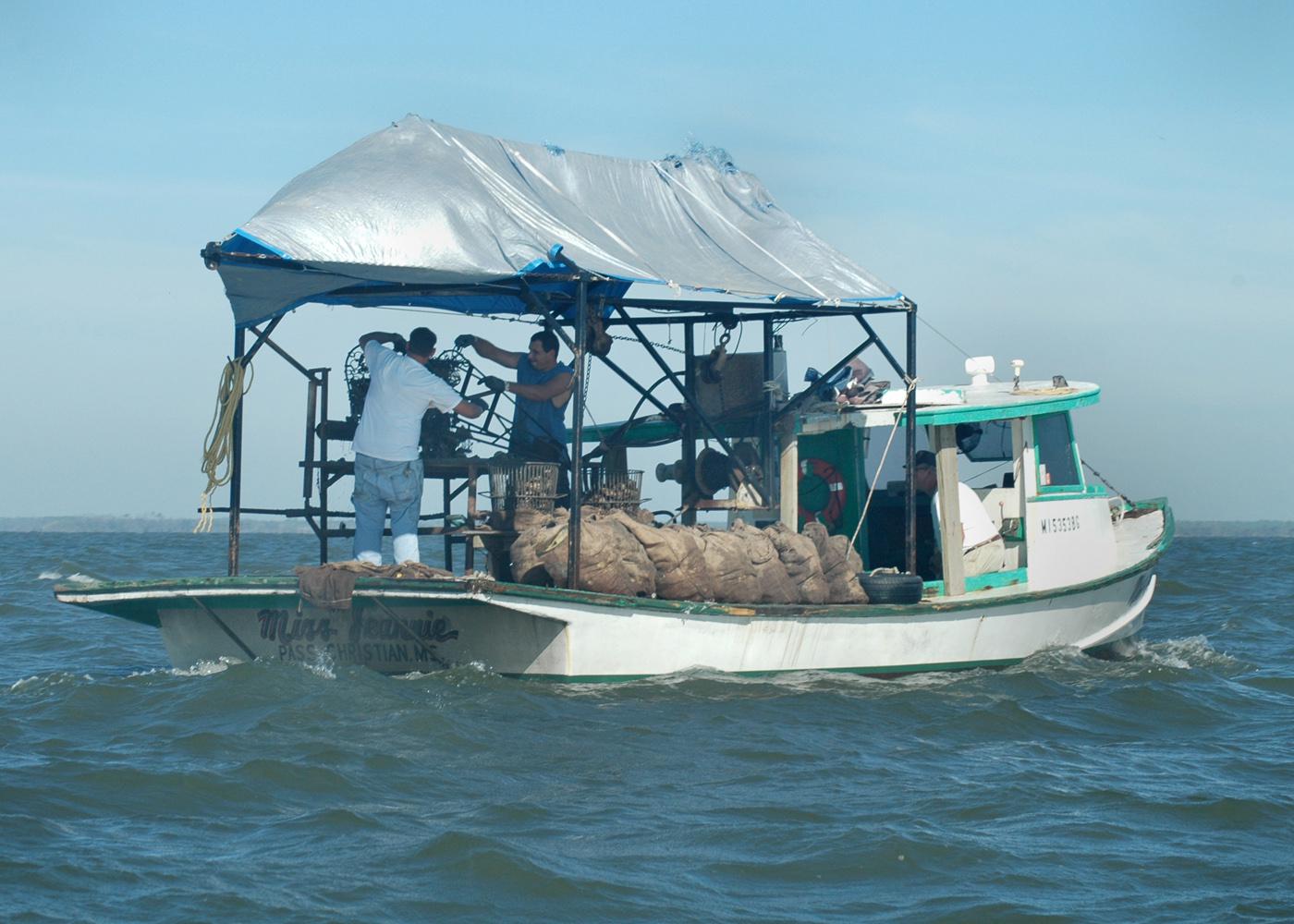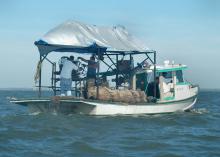Information Possibly Outdated
The information presented on this page was originally released on November 20, 2007. It may not be outdated, but please search our site for more current information. If you plan to quote or reference this information in a publication, please check with the Extension specialist or author before proceeding.
State's oyster industry poised for a comeback
BILOXI -- Shrimp boats and their tasty harvest are part of the image most people have of the Mississippi Gulf Coast, but other important seafood crops are pulled from the waters of the Gulf.
Before Hurricane Katrina, the oyster industry pumped about $100 million into the Mississippi economy each year. Oysters contribute to the economies of all the Gulf Coast states, and these states traditionally harvest the majority of the U.S. domestic oyster supply.
“The East Coast is famous for oysters, but today if you order fresh oysters in a restaurant on Maryland's Chesapeake Bay, you'll likely be eating Gulf Coast oysters because pollution and other factors have taken a toll on the industry in other areas of the nation,” said David Burrage, Extension professor of marine resources at Mississippi State University's Coastal Research and Extension Center in Biloxi. “The Mississippi oyster industry was dealt a serious blow by Katrina, and there was no harvest between fall 2005 and this fall.”
There will be a limited 2007 fall harvest, with only about half of the 300 or so people who normally work in the oyster harvest participating this year, he added. The curtailed harvest is expected to total about 35,000 sacks of oysters between fall 2007 and spring 2008, or about 10 percent of the annual pre-Katrina harvest.
Each sack of oysters in-the-shell weighs about 85 pounds.
“Hurricane Katrina damaged about 90 to 95 percent of Mississippi's 12,000 acres of oyster beds on Aug. 29, 2005,” Burrage said. “The Mississippi Department of Marine Resources, with federal funding and the help of Mississippi's oystermen, began rebuilding the oyster reefs in August 2006.”
Rebuilding damaged reefs and creating new ones is done with “cultch plants.” The plants consist of oyster shells or crushed concrete rubble spread over the bottom of the Gulf using high-pressure hoses. The material gives young oysters, or spats, a clean surface on which to attach and grow. After they attach, it takes them about 18 to 24 months to reach marketable size.
“It's one of our duties to see that our oyster reefs are developed and made as productive and profitable as possible,” said Marine Resources shellfish coordinator Scott Gordon. “The cultch planting is one of the most essential tools we have to achieve that.”
The success of the plants helped reopen the Mississippi oyster reefs this fall.
“It's really good to see all the new growth that's out there,” Gordon said. “We do have harvestable oysters, but we are limiting the harvest this year to protect the young oysters.”
Tradition is important in the oyster industry on the Gulf Coast, Gordon added, and it is a trade that is handed down from generation to generation.
“Most people on the oyster boats have been in the business for 10 or more years, and they learned from another fisherman, so it's important that the industry's infrastructure be rebuilt as soon as possible if we're going to pass the business along to another generation,” he said.
The oystermen are proud of their business and are working to see that it remains a part of the Gulf Coast.
“We probably have the best oyster reefs in the world right here in the Gulf, and with proper management of the resources, the industry can come back,” said Rusty Quave, who started going out on oyster boats when he was 10 and now owns a boat. He also serves as mayor of the coastal town of D'Iberville.
“Seafood has always been an important industry in our community, and we would like to see it continue,” he said.
The return of oyster boats to the Mississippi Gulf in 2007 is encouraging for all aspects of the industry.
“We're really not expecting much this year, but next year the harvest should be back to a good level,” said Phyllis Jenkins of Crystal Seas Oysters, a Jenkins family-owned business in Pass Christian specializing in oysters and shrimp.
“Most of the oysters we're processing this year are from Louisiana, and we're looking forward to Mississippi getting back into production,” Jenkins said.




